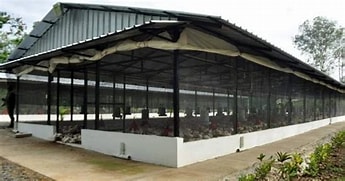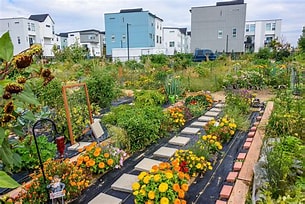Effective Housing Systems for Successful Poultry Production
Introduction
Poultry farming is a vital part of the agricultural industry, providing a significant source of protein for millions of people worldwide. To ensure the success of a poultry operation, choosing the right housing system is crucial. The housing system impacts not only the health and well-being of the birds but also the overall efficiency and productivity of the farm. In this article, we will explore five different types of poultry housing systems, discussing their characteristics, advantages, and suitability for various production goals. Whether you’re a seasoned poultry farmer or a newcomer to the industry, understanding these housing systems will help you make informed decisions for effective poultry production.
Understanding Poultry Housing Systems
Before diving into the specific types of poultry housing systems, it’s essential to understand what a poultry housing system entails. A poultry housing system refers to the structure and environment in which poultry are raised. It includes factors such as space allocation, ventilation, lighting, and access to food and water. The right housing system can lead to healthier birds, higher production rates, and improved overall management efficiency.

Importance of Choosing the Right Housing System
Choosing the appropriate housing system is critical for several reasons:
- Bird Welfare: Proper housing ensures that birds have enough space, ventilation, and comfort, which are essential for their health and well-being.
- Production Efficiency: The right system can enhance productivity by optimizing growth rates, egg production, and feed conversion ratios.
- Disease Control: Effective housing systems can minimize the risk of disease outbreaks by promoting biosecurity and proper sanitation practices.
- Cost Management: A well-designed housing system can reduce operational costs by improving resource utilization, such as feed and water.
1. Conventional Cages

Overview
Conventional cages are a traditional housing system commonly used in egg production. In this system, hens are housed in small cages, typically in a multi-tier arrangement. Each cage accommodates a few birds, providing them with minimal space.
Advantages
- Space Efficiency: Conventional cages maximize space usage, allowing for a higher density of birds in a smaller area.
- Ease of Management: The design facilitates easier feeding, watering, and egg collection, making it convenient for farm workers.
- Reduced Aggression: The confinement of birds in cages can lead to reduced aggression and pecking behavior compared to free-range systems.
Disadvantages
- Animal Welfare Concerns: Critics argue that conventional cages restrict natural behaviors, leading to stress and discomfort for the birds.
- Limited Space: The small space allocated to each bird can result in health issues, such as bone problems and feather loss.
Suitability
Conventional cages are best suited for large-scale commercial egg production where efficiency and cost-effectiveness are prioritized over animal welfare considerations.
2. Deep Litter System

Overview
The deep litter system involves housing birds on a bed of litter material, such as straw, wood shavings, or sawdust, which absorbs moisture and provides insulation. This system is commonly used for broilers and layers.
Advantages
- Natural Behavior: The deep litter allows birds to engage in natural behaviors, such as scratching and dust bathing, promoting their overall well-being.
- Waste Management: The litter can be composted and used as fertilizer, reducing waste and providing an additional source of income.
- Comfort: The bedding material provides a comfortable environment for the birds, helping to regulate temperature and reduce stress.
Disadvantages
- Disease Risk: If not managed properly, the deep litter system can become a breeding ground for pathogens, leading to disease outbreaks.
- Labor Intensive: Regular cleaning and maintenance are required to ensure the litter remains dry and hygienic.
3. Free-Range System
Overview
The free-range system allows poultry to roam freely outdoors during the day while providing shelter at night. This system promotes natural behaviors and offers birds access to fresh air and sunlight.
Advantages
- Animal Welfare: Free-range systems provide birds with the opportunity to engage in natural behaviors, leading to improved welfare and quality of life.
- Higher Quality Products: Eggs and meat from free-range birds are often perceived as higher quality and more flavorful, appealing to consumers seeking organic or humane products.
- Reduced Stress: The ability to roam and forage can reduce stress levels in birds, leading to healthier animals.
Disadvantages
- Predation Risk: Free-range birds are more vulnerable to predators, which can result in higher mortality rates.
- Variable Production: The production levels may vary due to environmental factors, such as weather and forage availability.
Suitability
The free-range system is ideal for small to medium-sized farms focused on producing high-quality eggs and meat while prioritizing animal welfare.
4. Battery Cages
Overview
Battery cages are an advanced version of conventional cages, typically used in large-scale egg production facilities. These cages are designed to house multiple birds in a compact space, often stacked in tiers.
Advantages
- High Production Efficiency: Battery cages maximize space and allow for efficient management of large flocks, leading to higher egg production rates.
- Ease of Automation: The design facilitates automation in feeding, watering, and egg collection, reducing labor costs.
- Disease Control: The confined space can help minimize the spread of diseases among birds.
Disadvantages
- Animal Welfare Issues: Similar to conventional cages, battery cages raise significant animal welfare concerns due to restricted movement and lack of natural behaviors.
- Public Backlash: Increasing consumer awareness and demand for humane treatment of animals have led to public criticism of battery cage systems.
Suitability
Battery cages are suitable for large-scale commercial egg production where efficiency and cost-effectiveness are prioritized, but they face increasing scrutiny from animal welfare advocates.
5. Aviary Systems

Overview
Aviary systems provide birds with a more spacious environment, allowing them to fly and move freely within a multi-level structure. This system is designed to accommodate a larger number of birds while promoting natural behaviors.
Advantages
- Enhanced Welfare: Aviary systems allow birds to engage in natural behaviors, leading to improved welfare and reduced stress.
- Higher Egg Quality: Eggs produced in aviary systems are often perceived as higher quality due to the birds’ improved living conditions.
- Better Space Utilization: The vertical design of aviaries maximizes space, allowing for a larger flock in a smaller footprint.
Disadvantages
- Higher Initial Costs: The construction and setup of aviary systems can be more expensive compared to traditional cage systems.
- Management Complexity: Managing a larger and more mobile flock can be more challenging and labor-intensive.
Suitability
Aviary systems are suitable for medium to large-scale farms focused on producing high-quality eggs while prioritizing animal welfare and allowing for natural behaviors.
Themes in Poultry Housing Systems
Animal Welfare
One of the most significant themes in poultry housing systems is animal welfare. As consumer awareness of animal rights grows, the demand for humane treatment of poultry has increased. This theme emphasizes the importance of providing birds with environments that allow for natural behaviors, social interactions, and adequate space.
Production Efficiency
Another essential theme is production efficiency. Poultry farmers must balance the welfare of their birds with the need for high production rates. Different housing systems offer varying levels of efficiency, and farmers must choose the system that aligns with their goals while considering the well-being of their flock.
Sustainability
Sustainability is an emerging theme in poultry farming, as farmers seek to minimize their environmental impact. Housing systems that promote waste management, resource conservation, and reduced carbon footprints are becoming increasingly important in modern poultry production.
Conclusion
In conclusion, “Effective Housing Systems for Successful Poultry Production” provides a comprehensive overview of the various poultry housing systems available for effective production. By examining the strengths and weaknesses of each system, the article empowers farmers to make informed decisions that align with their goals and values. The themes of animal welfare, production efficiency, and sustainability are central to the discussion, reflecting the evolving landscape of poultry farming in today’s world. As the industry continues to adapt to changing consumer demands and environmental challenges, the insights provided in this article will remain relevant and valuable for years to come.
Meta Description:
“Discover the five different poultry housing systems for effective production. Learn about their advantages, disadvantages, and impact on animal welfare and efficiency.”
FAQs
1. What are the main types of poultry housing systems?
The main types include conventional cages, deep litter systems, free-range systems, battery cages, and aviary systems.
2. How does the choice of housing system affect poultry welfare?
The choice of housing system significantly impacts poultry welfare by influencing their ability to engage in natural behaviors, access to space, and overall comfort.
3. What are the advantages of free-range poultry systems?
Free-range systems allow birds to roam freely, promoting natural behaviors, improving their quality of life, and producing higher-quality eggs and meat.
4. Why is sustainability important in poultry farming?
Sustainability is crucial in poultry farming to minimize environmental impact, ensure the health of the ecosystem, and meet the growing demand for ethically produced food.
5. How can farmers choose the best housing system for their needs?
Farmers should consider factors such as the size of their operation, their production goals, animal welfare standards, and the resources available to them when choosing a housing system.


